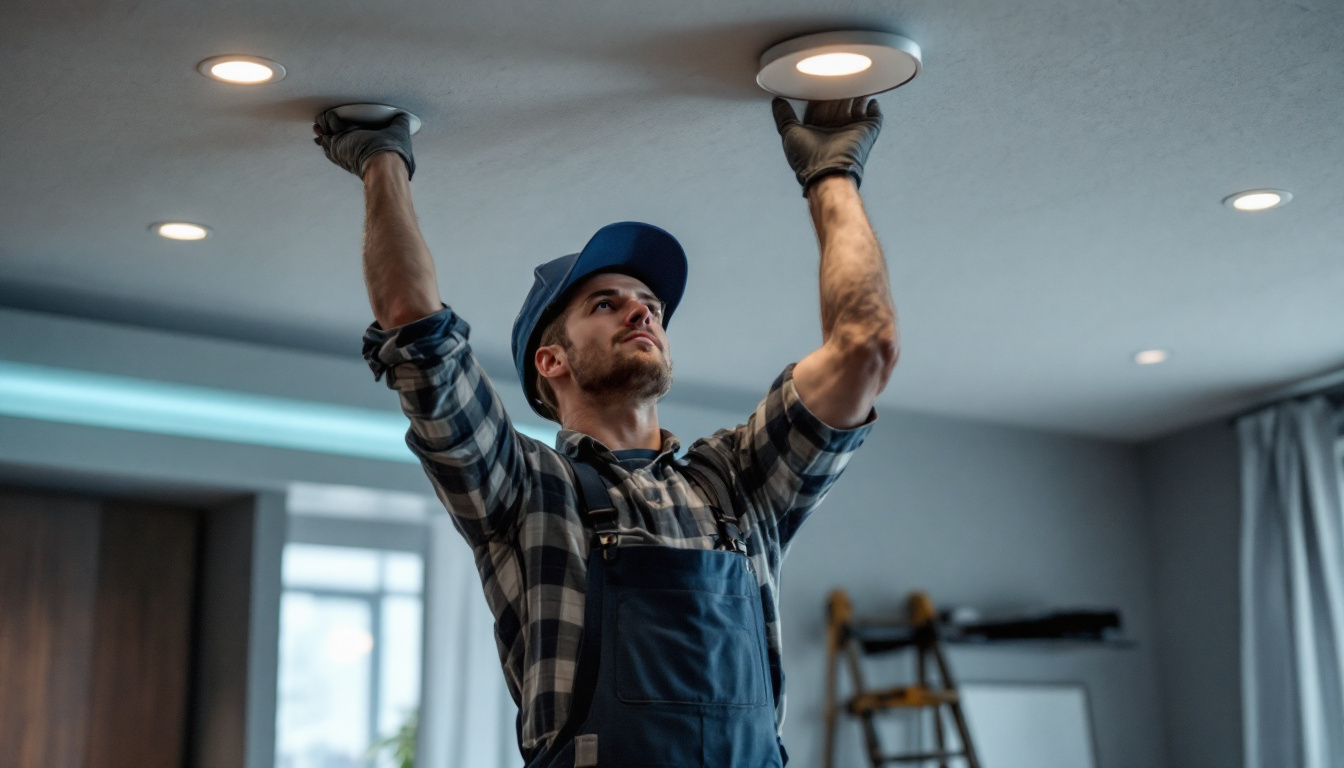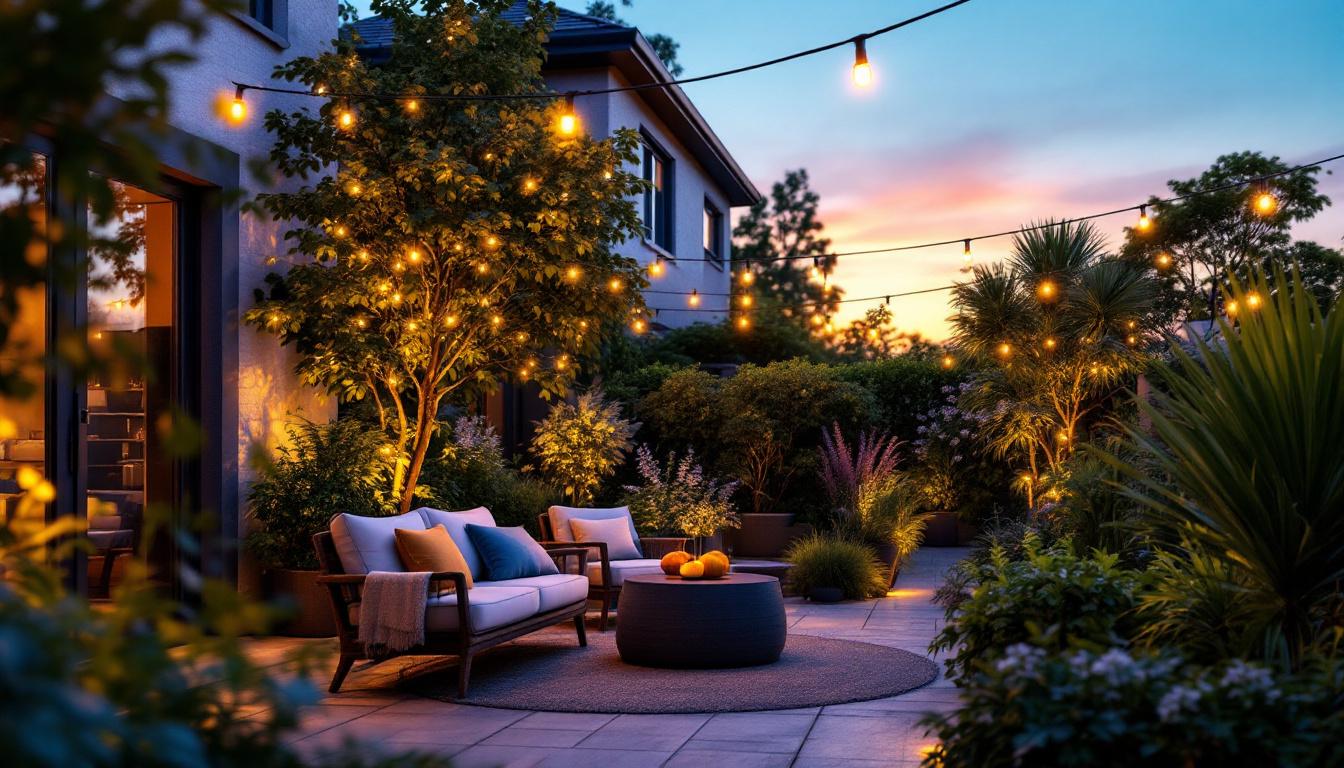
Lighting design has evolved significantly over the years, and ceiling recessed LED fixtures have emerged as a popular choice for both residential and commercial spaces. For lighting contractors, understanding the best practices and proven methods for installing these fixtures is crucial to delivering quality results that meet client expectations. This article delves into the intricacies of ceiling recessed LED lighting, offering valuable insights and techniques that can enhance the services provided by lighting professionals.
Ceiling recessed LED lights, often referred to as can lights or downlights, are fixtures that are installed into a hollow opening in the ceiling. These lights are designed to provide a clean, streamlined look while delivering effective illumination. They are available in various sizes, shapes, and color temperatures, making them versatile for different applications.
One of the primary advantages of recessed LED lighting is its energy efficiency. Compared to traditional incandescent bulbs, LEDs consume significantly less power, resulting in reduced energy bills and a lower carbon footprint. Additionally, they have a longer lifespan, which translates to fewer replacements and less maintenance for the contractor.
Recessed LED fixtures offer several benefits that make them an attractive option for both contractors and clients. Firstly, their sleek design allows for a minimalist aesthetic, making them suitable for modern interiors. They can be strategically placed to highlight architectural features or artwork, enhancing the overall ambiance of a space.
Moreover, recessed LEDs provide excellent light quality. They are available in various color temperatures, allowing contractors to select the perfect hue to match the desired atmosphere. Whether it’s a warm, inviting glow for a living room or a cool, bright light for a workspace, the flexibility of LED lighting can cater to diverse needs.
Ceiling recessed LED lights can be utilized in various settings, including residential homes, commercial buildings, and outdoor spaces. In residential applications, they are often used in living rooms, kitchens, and bathrooms to create layered lighting effects. In commercial settings, these fixtures can illuminate offices, retail spaces, and galleries, providing both functional and aesthetic lighting solutions.
Outdoor recessed LED lights are also gaining popularity, especially for patios and walkways. They can enhance safety and visibility while adding an elegant touch to outdoor designs. Understanding the specific needs of each application is essential for lighting contractors to recommend the right products and installation techniques.
In addition to their aesthetic and functional benefits, recessed LED lights can also be integrated with smart home technology. This allows homeowners to control the lighting remotely, adjust brightness levels, and even change color temperatures through their smartphones or voice-activated devices. Such features not only enhance convenience but also contribute to energy savings by allowing users to turn off lights when they are not needed or set schedules for automatic operation.
Furthermore, the installation of recessed LED lighting can significantly influence the perceived size and openness of a space. By strategically placing these fixtures, designers can create an illusion of higher ceilings and a more expansive atmosphere. This is particularly beneficial in smaller rooms where maximizing space is a priority. The ability to customize the placement and intensity of the lighting further allows for a tailored approach to each unique environment, ensuring that every area is both inviting and functional.
Proper installation is critical to the performance and longevity of recessed LED fixtures. Lighting contractors must be familiar with the various installation techniques to ensure a seamless integration into the ceiling. This section outlines essential methods and considerations for effective installation.
Before installation begins, it is vital to plan the layout of the recessed lights. This involves determining the spacing between fixtures to achieve even illumination and avoid dark spots. A general rule of thumb is to space the lights approximately 4 to 6 feet apart, depending on the height of the ceiling and the desired light output.
Contractors should also consider the purpose of the lighting in each area. For instance, task lighting in kitchens may require closer spacing, while ambient lighting in living rooms can be more spread out. Additionally, taking into account the beam angle of the fixtures will help in achieving the desired lighting effect.
Electrical considerations are paramount when installing recessed LED lights. Contractors must ensure that the existing wiring can support the new fixtures, particularly in terms of load capacity. It may be necessary to upgrade the circuit or install additional wiring to accommodate the new lights.
Furthermore, using compatible dimmer switches can enhance the functionality of recessed LEDs. Not all dimmers are compatible with LED technology, so it is essential to select dimmers specifically designed for use with LED fixtures. This will prevent flickering and ensure smooth dimming capabilities.
Once the layout is planned and electrical considerations are addressed, contractors can proceed to cut the openings for the recessed fixtures. It is crucial to use the correct size hole saw for the specific fixture being installed. Accurate measurements will prevent any gaps or misalignments that could detract from the overall appearance.
Additionally, contractors should be mindful of any obstructions in the ceiling, such as ductwork or plumbing. Utilizing a stud finder can help identify these obstacles and ensure that the installation is carried out safely and effectively.
With a wide array of recessed LED fixtures available on the market, selecting the right products can be overwhelming. However, understanding the key features and specifications can simplify the decision-making process for lighting contractors.
Recessed LED fixtures come in various types and styles, including adjustable, fixed, and baffle trims. Adjustable fixtures allow for directional lighting, making them ideal for highlighting artwork or architectural details. Fixed trims provide a more traditional look, while baffle trims help reduce glare and create a softer light distribution.
Contractors should consider the specific needs of each project when selecting the fixture type. For instance, in a space where flexibility is essential, adjustable fixtures may be the best choice. On the other hand, for a more uniform lighting effect, fixed trims may be preferable.
Color temperature is another critical factor to consider when choosing recessed LED fixtures. Measured in Kelvin (K), color temperatures can range from warm white (around 2700K) to cool white (over 5000K). The choice of color temperature can significantly influence the mood of a space, making it essential to align the selection with the client’s preferences.
Brightness, measured in lumens, is equally important. Contractors should assess the required brightness level based on the intended use of the space. For example, task-oriented areas like kitchens may require higher lumen output compared to ambient lighting in bedrooms.
Energy efficiency is a vital consideration for both contractors and clients. Look for fixtures with the ENERGY STAR label, which ensures that the products meet strict energy efficiency guidelines. These fixtures not only reduce energy consumption but also contribute to long-term cost savings for the client.
Additionally, understanding the wattage equivalence can help contractors communicate the benefits of LED lighting to clients. For instance, a 12-watt LED can provide the same brightness as a 60-watt incandescent bulb, showcasing the energy savings potential.
Even though recessed LED fixtures are known for their longevity and low maintenance requirements, occasional issues may arise that require attention. Being prepared to address these issues can enhance the contractor’s reputation for quality service.
One common issue with recessed LED lights is flickering. This can occur due to incompatible dimmer switches or fluctuating voltage levels. To resolve this, contractors should recommend compatible dimmers and ensure that the electrical supply is stable.
Another issue may involve overheating, which can lead to reduced lifespan or even failure of the fixture. Ensuring proper airflow around the fixtures during installation can help mitigate this problem. If overheating occurs, it may be necessary to replace the fixture with one that has better thermal management features.
While recessed LEDs require minimal maintenance, regular cleaning can help maintain their performance and appearance. Dust and debris can accumulate on the fixtures, affecting light output. Contractors should advise clients to clean the fixtures periodically using a soft, dry cloth to avoid scratching the surface.
Additionally, inspecting the fixtures for any signs of damage or wear can help catch potential issues before they escalate. Encouraging clients to report any irregularities promptly can ensure that the fixtures remain in optimal condition.
Ceiling recessed LED lighting offers a multitude of advantages for both contractors and clients. By understanding the intricacies of installation, fixture selection, and maintenance, lighting contractors can deliver exceptional results that enhance the functionality and aesthetics of any space. As the demand for energy-efficient and versatile lighting solutions continues to grow, staying informed about the latest trends and best practices will position contractors for success in the industry.
Incorporating these proven methods into everyday practices will not only improve the quality of work but also foster strong relationships with clients, leading to repeat business and referrals. Embracing the potential of ceiling recessed LED lighting is a step toward a brighter, more efficient future in the world of lighting design.
Ready to elevate your lighting projects with the highest quality recessed LED fixtures? Look no further than LumenWholesale, where we provide contractors with spec-grade lighting products at unbeatable wholesale prices. Say goodbye to local distributor markups and hello to a vast selection of reliable, high-performance lighting that meets rigorous industry standards. With LumenWholesale, bulk buying is a breeze, thanks to free shipping and transparent pricing. Don’t compromise on quality or value—choose LumenWholesale for the perfect combination of excellence and affordability. Wholesale Lighting at the Best Value is just a click away. Enhance your professional lighting services today!

Discover essential insights into bathroom lighting that every contractor should know.

Discover the latest trends in weatherproof connectors that every lighting contractor needs to know.

Discover the essential guide to light on sensor technology tailored for lighting contractors.

Discover the insider tips from lighting contractors on mastering solar-powered LED strip lights for outdoor spaces.